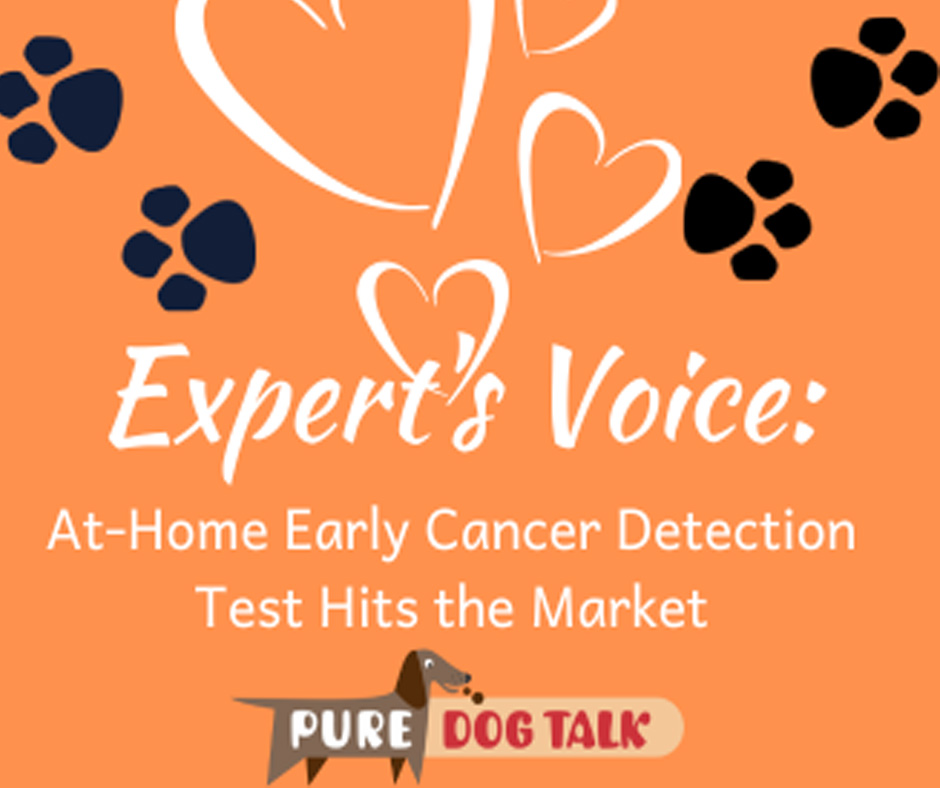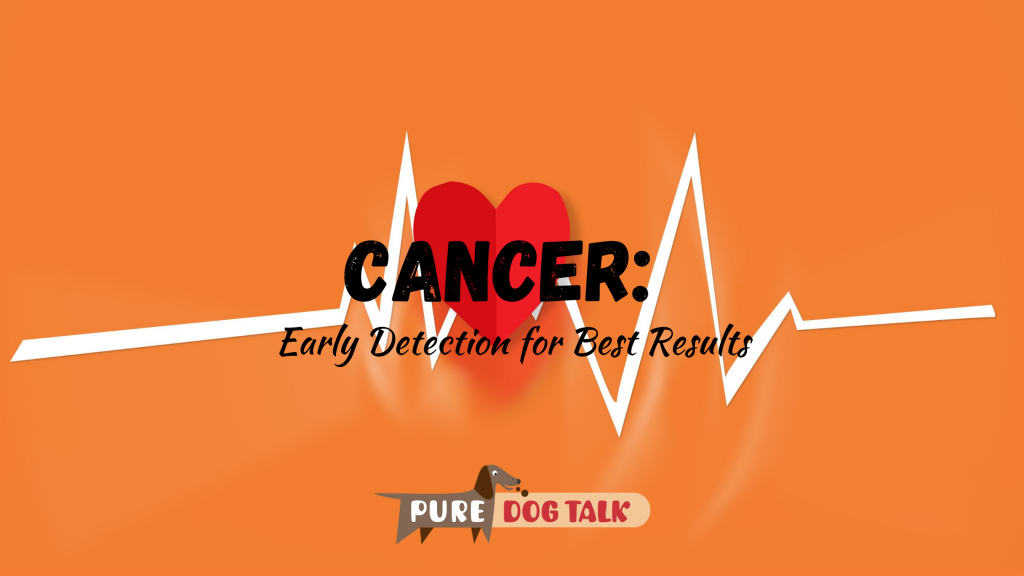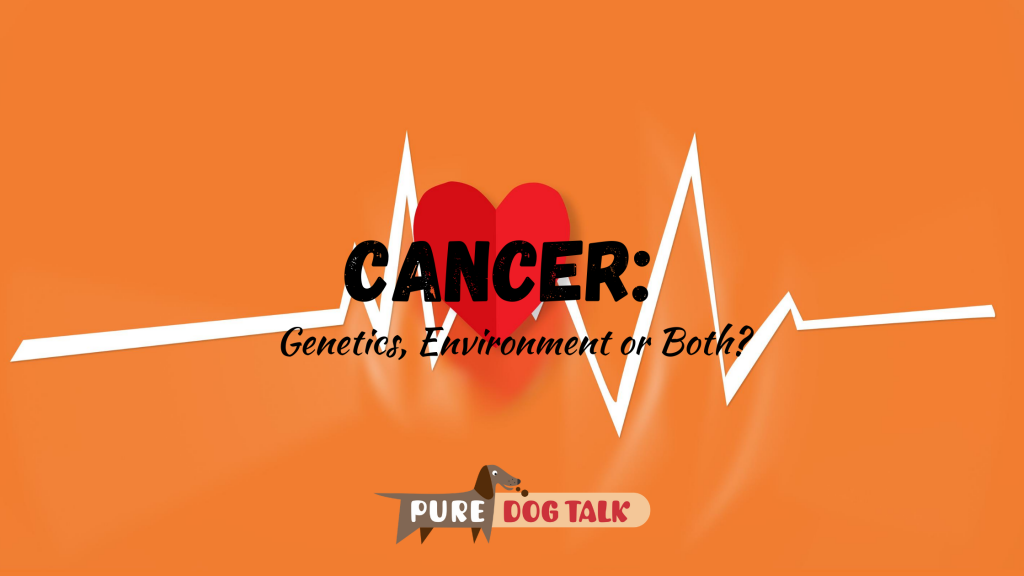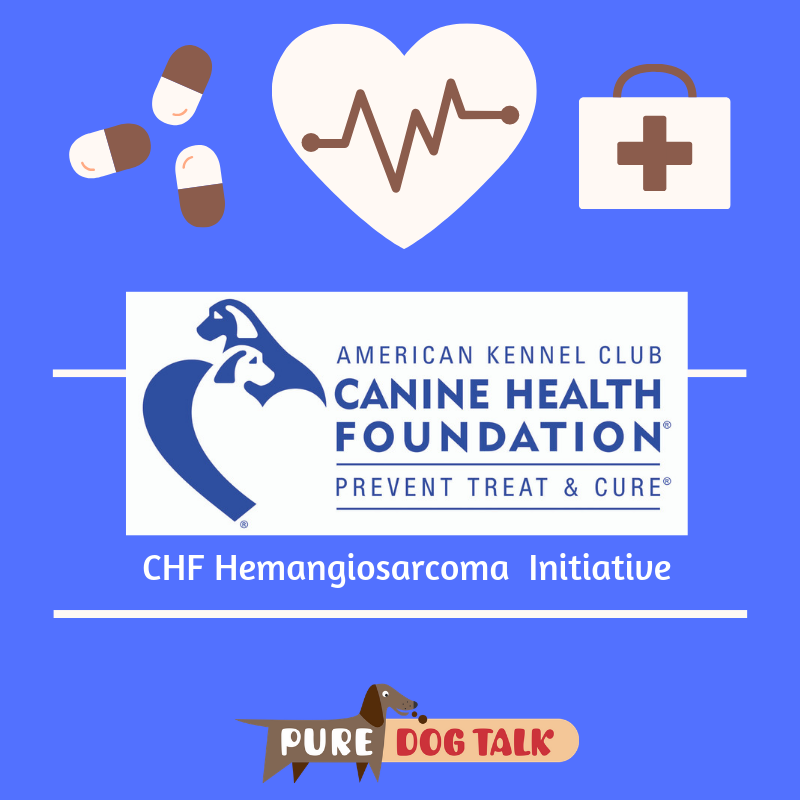624 – At-Home Early Cancer Detection Test Hits the Market
At-Home Early Cancer Detection Test Hits the Market
Chan Namgong, founder of Oncotect, joins host Laura Reeves for a very personal discussion of the value of early cancer detection for our dogs.
Namgong launched his company in 2019 in the aftermath of his mother’s cancer diagnosis. He already knew that dogs can detect human cancer by scent. But then he learned about a group of scientists that discovered that small nematodes can detect cancerous metabolites in urine in human medicine.
“What’s amazing about these small nematodes is that they have very high sense of smell,” Namgong said. “They have more olfactory receptors than dogs, despite their small size. So what we have done is we’ve developed a platform where we are using (nematodes) to detect cancerous metabolites in dogs’ urine that contains the cancerous metabolites.
“(Nematodes) are small worms, and the scientific name of them is C. elegans. And C. elegans is actually, you know, if you are a scientist or biologist, it’s a model organism. It’s widely used in different disciplines of science. In pharmacology, chemistry, biology, you know, cancer cells, stem cell research, environmental study, because we know everything about these worms. In fact, C. elegans was the very first multi-cell organism that was ever DNA sequenced. And the way we utilize them is we can actually measure the intensity of the olfactory neuron in their head.
“We can categorize pets as low, moderate or high risk of cancer. Oncotect is a screening test, not a diagnostic test. So, this is meant to be proactive and preventive measure. And then if there’s any risk, moderate or high risk, we’ll bring you back to your veterinarian for further consultation, diagnostic tests such as x -rays or ultrasound to really confirm or deny a cancer suspicion or to identify the type and location.
“Prevention of cancer is almost impossible because we don’t know what’s really truly causing cancer. But your best strategy is find it early and treat it quickly. Diagnosing a cancer is like a putting a puzzle together. You’ve got to bring different pieces of information to really look at a big picture.
“We have primarily focused on the four most common treatable canine cancers. They are lymphoma, melanoma, hemangiosarcoma and mast cell tumors. And the reason why we focus on those four is because just due to the limited resources that we have.
“We’ve tested over 700 dogs in the last year or so. And among those 700 dogs, we have detected TCC, bladder, prostate, liver, soft tissue. So we’ve detected other cancer types, but the reason why we are not making claims for them is because we haven’t run a large enough sample size to publish any scientific paper on them, which we plan to do this year.”
423 — Cancer Specialist Provides Important Tips on Early Detection
Cancer Specialist Provides Important Tips on Early Detection
Dr. Lori Cesario DVM DACVIM (Oncology), Owner, Canine Cancer Academy, joins host Laura Reeves for a life-saving conversation on early detection of cancer in our dogs.
Whether the signs are fleeting and faint, or rapid onset and obvious, Cesario provides tips and tools to help our dogs live longer and healthier lives by catching cancer early.
“Cancer can honestly look like anything,” Cesario said. “A toenail or skin infection. Or it could just look like your dog is a little tired or has a nosebleed or is drinking a ton of water and normally he doesn’t do that.
“So I think the best place to start is just knowing what is normal for your dog and trusting your instincts. Is this normal and this something new isn’t normal. If something changes and is either getting worse or just isn’t getting better, and what your vet suspected just isn’t turning out to be the reason, just don’t blow it off. Pursue it until you have an answer.
“I had a client who did a lot of dock diving with her dog. That dog was just so energetic, so full of life walking down the street, you’d never know there was anything wrong with her. At her most recent dock diving competition, she just wasn’t diving as far as normal. So her incredibly astute owner just said ‘ya you know, I just don’t think somethings right.’ So she took her in for a blood test and the blood test showed that she was just a little bit anemic. Her red blood cell count was a little bit low. They decided to do an ultrasound and found a mass in the spleen.”
Some specific cancers and warnings signs Cesario described include skin tumors, mast cell tumors and hemnagiosarcoma.
“Skin tumors can come in all shapes and sizes,” Cesario said. “We all want them to be benign. The difficult thing about skin tumors is that there are some malignant tumors, especially things like mast cell tumors, that can look exactly the same as a benign tumor, like a lipoma. We’ve all felt lipomas. They’re just the squishy thing under the skin, not too exciting. But whenever a dog develops a new skin mass, you always ask your vet to sample it and get a diagnosis.”
“Our Eyes Aren’t Microscopes”
Cesario reminds listeners of a few warnings signs, but insists that the best answer is to get a tissue sample for a firm diagnosis of visible masses or lesions.
“If you see a mass and it’s waxing and waning, that’s very common with mast cell tumors,” Cesario said. “If you are noticing something like that, don’t think that you’re just making it up in your head. It could very well be a mass. You’re not losing your mind. I tell people to just draw a little black magic marker with a sharpie around the mass (and watch if it increases or shrinks). If it’s a fast growing mass, if it’s open or ulcerated or hairless, very pink, that can also be a mast cell tumor. The only way to know is to sample it.”
Cesario also references the long-awaited blood test for cancer antibodies as a potential game changer in early detection of these deadly diseases.
“(Researchers) have developed a blood test that detects antibodies that the body has produced against the tumor. It sounds like the one that they’re going to release first is a blood test that can detect antibodies against hemangiosarcoma,” Cesario said.
418 – Cancer: Genetics, Environment or Both? Study Seeks Answers
Lori Cesario DVM DACVIM (Oncology), Owner, Canine Cancer Academy joins host Laura Reeves in a conversation about Cancer in dogs. Cesario breaks down what we know and what we don’t know about cancers, genetic basis, environmental triggers and more.
“I would say that we don’t know more than we know, unfortunately,” Cesario said. “I always feel like I leave people wanting a lot more when I have clients ask me why their dog developed cancer. Hopefully that will change. A lot of smart people are working really hard to find more information.
“The big picture is typically no one thing is going to 100% cause cancer in any one dog or person. So we’re looking for risk factors. So does your dog being a certain breed increase risk for developing a certain type of cancer? Or does a certain environmental component increase his or her risk for developing a certain cancer. In people we have some information about certain diets or components of diet increasing certain types of cancers. We’re really lacking a lot of that information in veterinary medicine.”
Cesario notes an important and wide-ranging study of Golden Retrievers that is seeking to answer some of these questions.
“The Morris Animal Foundation is running this study … they have 3,044 Golden retrievers participating and the goal is really to follow these thousands of Golden retrievers over their entire lifetime and get really an exhaustive amount of information. From what is going on in their environment, with their diet, with their genetics, to really determine what nutritional genetic, and environmental factors contribute to cancer and other diseases.
“Not only are they doing routine physical exams, not only are they collecting blood and hair and toenail samples on a regular basis, but they are asking the family questions like does your dog live with a smoker? Do you have carpet or hardwood floors? What does your dog eat? Does it eat vegetables? What type of vegetables? OK bell Peppers, what color Bell Peppers? How many Peppers? Does your dog swim in the pool? In a pond? At the beach? In the ocean?
“So, they’re getting as much information as possible and then they’re banking all of this data and other researchers can use the data. Then over time, they’re finding out which of these dogs develop certain diseases which don’t. We know that up to 65% of goldens will die of cancer, unfortunately, so they decided to run a parallel study called the Golden Oldies study. They are currently recruiting dogs. So basically, they’re looking for Golden Retrievers, purebred ideally, AKC registered better, 12 years old or older that don’t have cancer currently that have never had cancer.”
The link for the Golden Oldies study:
https://www.morrisanimalfoundation.org/golden-oldies-contact-form
244 – CHF Hemangiosarcoma Initiative and Matching Funds
Hemangiosarcoma Strikes Quickly and With No Warning
Canine Health Foundation (CHF) CEO Dr. Diane Brown talks with me about the most current research into hemangiosarcoma. CHF is funding a major initiative dedicated to moving the needle on this deadly disease.
Hemangiosarcoma is an aggressive, silent killer, Brown said. This particular cancer is specific to dogs and originates in blood vessels. Primary sites in which hemangio will present are the spleen and heart, Brown noted, owing to the abundance of blood vessels in those organs.
“These cancers grow quickly and quietly,” Brown said. “Once people know the dog has hemangio, generally the tumor has ruptured and the dogs bleed internally.”
No definitive genetic connection
Removing the cancer doesn’t cure the disease, Brown said. She added that all of the treatments tried over time have not improved overall survival time. Hemangio is a cancer seen often in large breed dogs, but Brown noted veterinarians are seeing it more and more frequently in all sizes and mixed breed dogs as well.
“There are higher risk breeds,” Brown said “but there is no direct, definitive genetic connection.” She added that research has so far not been able to identify a “hemangiosarcoma gene.”
“What we really need is a way to do an earlier diagnosis,” Brown noted.
To that end, CHF is spending resources investigating early diagnosis options — whether a blood test, liquid biopsy, genetic test. They are trying to find a way to diagnose the disease when it is at a “low cellularity.”
A major matching grant from AKC for $250,000 last year has been met with additional funds from the Golden Retriever Foundation, Flat Coated Retriever Foundation, American German Shepherd Dog Charitable Foundation and more.
Study participation opportunities
Owners and breeders who are interested in participating in various CHF studies are encouraged to visit the website and peruse the active studies currently seeking participation.
Join CHF in supporting these important research initiatives by attending Canines and Cocktails Thursday, 12/13 at the Rosen Center hotel in Orlando, FL. Tickets are available at the CHF booth at the dog show.
Listen to previous episodes with Dr. Brown on epilepsy, tick borne diseases and theriogenology residencies





